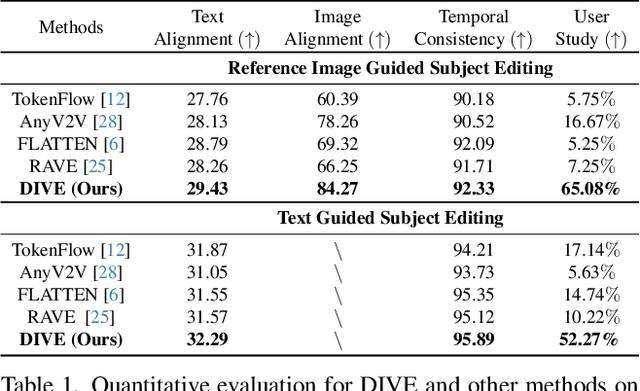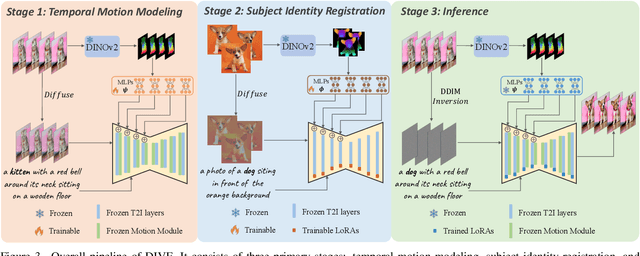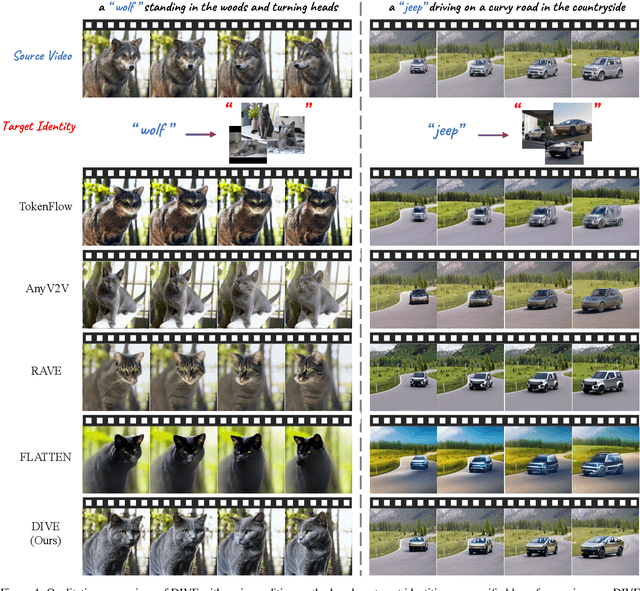Mingfu Yan
Leveraging Contrast Information for Efficient Document Shadow Removal
Apr 01, 2025Abstract:Document shadows are a major obstacle in the digitization process. Due to the dense information in text and patterns covered by shadows, document shadow removal requires specialized methods. Existing document shadow removal methods, although showing some progress, still rely on additional information such as shadow masks or lack generalization and effectiveness across different shadow scenarios. This often results in incomplete shadow removal or loss of original document content and tones. Moreover, these methods tend to underutilize the information present in the original shadowed document image. In this paper, we refocus our approach on the document images themselves, which inherently contain rich information.We propose an end-to-end document shadow removal method guided by contrast representation, following a coarse-to-fine refinement approach. By extracting document contrast information, we can effectively and quickly locate shadow shapes and positions without the need for additional masks. This information is then integrated into the refined shadow removal process, providing better guidance for network-based removal and feature fusion. Extensive qualitative and quantitative experiments show that our method achieves state-of-the-art performance.
DIVE: Taming DINO for Subject-Driven Video Editing
Dec 04, 2024



Abstract:Building on the success of diffusion models in image generation and editing, video editing has recently gained substantial attention. However, maintaining temporal consistency and motion alignment still remains challenging. To address these issues, this paper proposes DINO-guided Video Editing (DIVE), a framework designed to facilitate subject-driven editing in source videos conditioned on either target text prompts or reference images with specific identities. The core of DIVE lies in leveraging the powerful semantic features extracted from a pretrained DINOv2 model as implicit correspondences to guide the editing process. Specifically, to ensure temporal motion consistency, DIVE employs DINO features to align with the motion trajectory of the source video. Extensive experiments on diverse real-world videos demonstrate that our framework can achieve high-quality editing results with robust motion consistency, highlighting the potential of DINO to contribute to video editing. For precise subject editing, DIVE incorporates the DINO features of reference images into a pretrained text-to-image model to learn Low-Rank Adaptations (LoRAs), effectively registering the target subject's identity. Project page: https://dino-video-editing.github.io
Diffusion Model-Based Image Editing: A Survey
Feb 27, 2024



Abstract:Denoising diffusion models have emerged as a powerful tool for various image generation and editing tasks, facilitating the synthesis of visual content in an unconditional or input-conditional manner. The core idea behind them is learning to reverse the process of gradually adding noise to images, allowing them to generate high-quality samples from a complex distribution. In this survey, we provide an exhaustive overview of existing methods using diffusion models for image editing, covering both theoretical and practical aspects in the field. We delve into a thorough analysis and categorization of these works from multiple perspectives, including learning strategies, user-input conditions, and the array of specific editing tasks that can be accomplished. In addition, we pay special attention to image inpainting and outpainting, and explore both earlier traditional context-driven and current multimodal conditional methods, offering a comprehensive analysis of their methodologies. To further evaluate the performance of text-guided image editing algorithms, we propose a systematic benchmark, EditEval, featuring an innovative metric, LMM Score. Finally, we address current limitations and envision some potential directions for future research. The accompanying repository is released at https://github.com/SiatMMLab/Awesome-Diffusion-Model-Based-Image-Editing-Methods.
GPT4Motion: Scripting Physical Motions in Text-to-Video Generation via Blender-Oriented GPT Planning
Nov 21, 2023Abstract:Recent advances in text-to-video generation have harnessed the power of diffusion models to create visually compelling content conditioned on text prompts. However, they usually encounter high computational costs and often struggle to produce videos with coherent physical motions. To tackle these issues, we propose GPT4Motion, a training-free framework that leverages the planning capability of large language models such as GPT, the physical simulation strength of Blender, and the excellent image generation ability of text-to-image diffusion models to enhance the quality of video synthesis. Specifically, GPT4Motion employs GPT-4 to generate a Blender script based on a user textual prompt, which commands Blender's built-in physics engine to craft fundamental scene components that encapsulate coherent physical motions across frames. Then these components are inputted into Stable Diffusion to generate a video aligned with the textual prompt. Experimental results on three basic physical motion scenarios, including rigid object drop and collision, cloth draping and swinging, and liquid flow, demonstrate that GPT4Motion can generate high-quality videos efficiently in maintaining motion coherency and entity consistency. GPT4Motion offers new insights in text-to-video research, enhancing its quality and broadening its horizon for future explorations.
 Add to Chrome
Add to Chrome Add to Firefox
Add to Firefox Add to Edge
Add to Edge